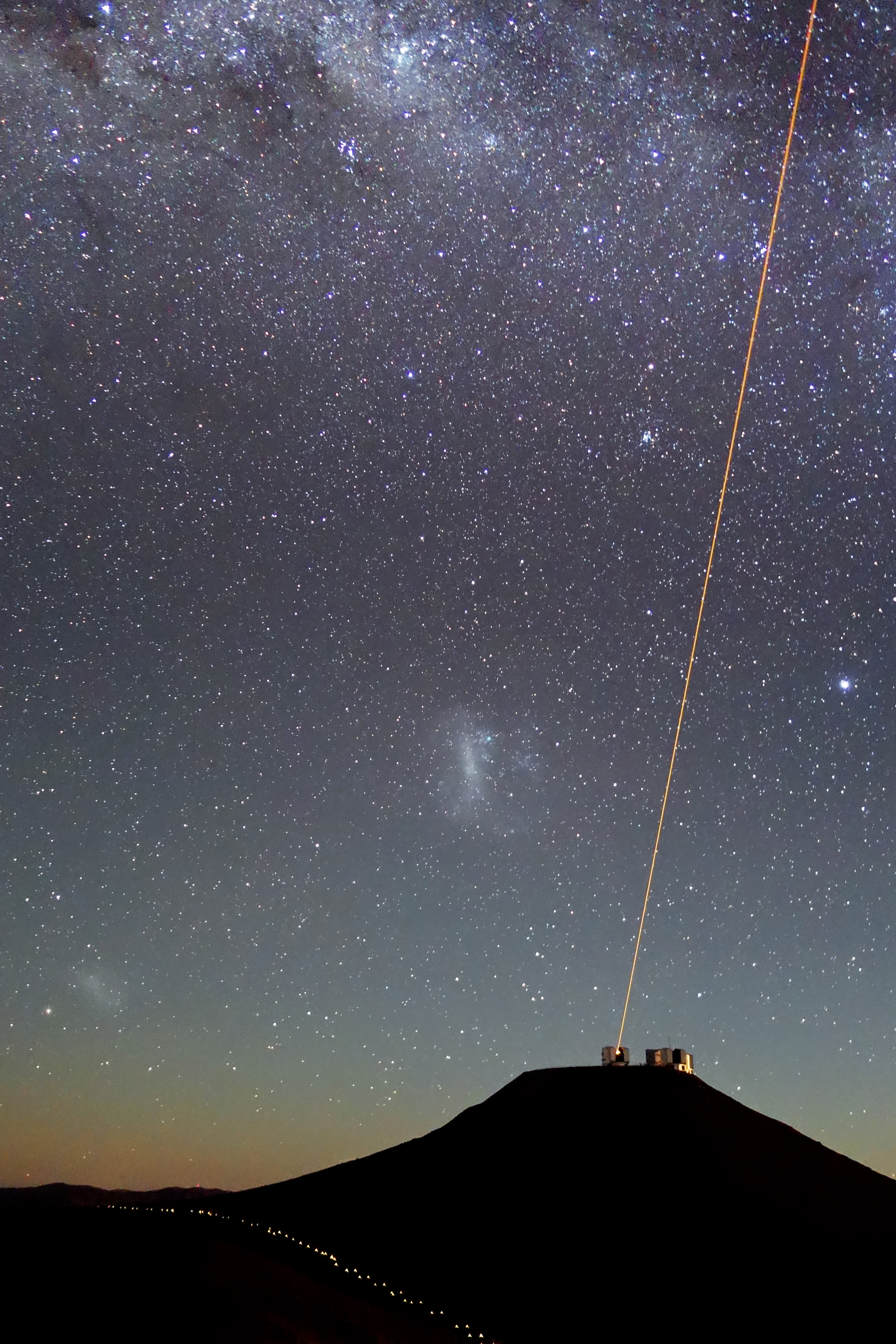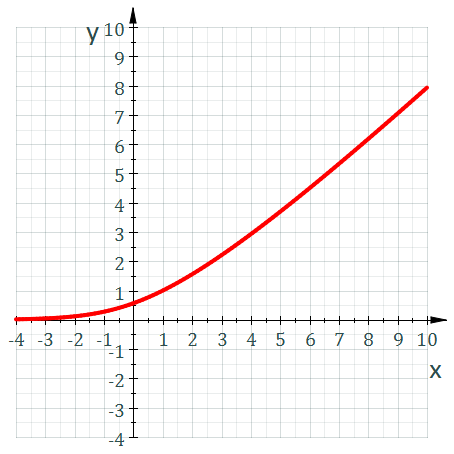|
Q-switched
Q-switching, sometimes known as giant pulse formation or Q-spoiling, is a technique by which a laser can be made to produce a pulsed output beam. The technique allows the production of light pulses with extremely high (gigawatt) peak power, much higher than would be produced by the same laser if it were operating in a continuous wave (constant output) mode. Compared to modelocking, another technique for pulse generation with lasers, Q-switching leads to much lower pulse repetition rates, much higher pulse energies, and much longer pulse durations. The two techniques are sometimes applied together. Q-switching was first proposed in 1958 by Gordon Gould, p. 93. and independently discovered and demonstrated in 1961 or 1962 by R.W. Hellwarth and F.J. McClung at Hughes Research Laboratories using electrically switched Kerr cell shutters in a ruby laser. Optical nonlinearities such as Q-switching were fully explained by Nicolaas Bloembergen, who won the Nobel prize in 1981 for this work. ... [...More Info...] [...Related Items...] OR: [Wikipedia] [Google] [Baidu] |
Laser
A laser is a device that emits light through a process of optical amplification based on the stimulated emission of electromagnetic radiation. The word "laser" is an acronym for "light amplification by stimulated emission of radiation". The first laser was built in 1960 by Theodore H. Maiman at Hughes Research Laboratories, based on theoretical work by Charles Hard Townes and Arthur Leonard Schawlow. A laser differs from other sources of light in that it emits light which is ''coherent''. Spatial coherence allows a laser to be focused to a tight spot, enabling applications such as laser cutting and lithography. Spatial coherence also allows a laser beam to stay narrow over great distances (collimation), enabling applications such as laser pointers and lidar (light detection and ranging). Lasers can also have high temporal coherence, which allows them to emit light with a very narrow spectrum. Alternatively, temporal coherence can be used to produce ultrashort pulses of ligh ... [...More Info...] [...Related Items...] OR: [Wikipedia] [Google] [Baidu] |
Optical Amplifier
An optical amplifier is a device that amplifies an optical signal directly, without the need to first convert it to an electrical signal. An optical amplifier may be thought of as a laser without an optical cavity, or one in which feedback from the cavity is suppressed. Optical amplifiers are important in optical communication and laser physics. They are used as optical repeaters in the long distance fiberoptic cables which carry much of the world's telecommunication links. There are several different physical mechanisms that can be used to amplify a light signal, which correspond to the major types of optical amplifiers. In doped fiber amplifiers and bulk lasers, stimulated emission in the amplifier's gain medium causes amplification of incoming light. In semiconductor optical amplifiers (SOAs), electron-hole recombination occurs. In Raman amplifiers, Raman scattering of incoming light with phonons in the lattice of the gain medium produces photons coherent with the inco ... [...More Info...] [...Related Items...] OR: [Wikipedia] [Google] [Baidu] |
Feedback
Feedback occurs when outputs of a system are routed back as inputs as part of a chain of cause-and-effect that forms a circuit or loop. The system can then be said to ''feed back'' into itself. The notion of cause-and-effect has to be handled carefully when applied to feedback systems: History Self-regulating mechanisms have existed since antiquity, and the idea of feedback had started to enter economic theory in Britain by the 18th century, but it was not at that time recognized as a universal abstraction and so did not have a name. The first ever known artificial feedback device was a float valve, for maintaining water at a constant level, invented in 270 BC in Alexandria, Egypt. This device illustrated the principle of feedback: a low water level opens the valve, the rising water then provides feedback into the system, closing the valve when the required level is reached. This then reoccurs in a circular fashion as the water level fluctuates. Centrifugal governors were ... [...More Info...] [...Related Items...] OR: [Wikipedia] [Google] [Baidu] |
Saturable Absorber
Saturable absorption is a property of materials where the absorption of light decreases with increasing light intensity. Most materials show some saturable absorption, but often only at very high optical intensities (close to the optical damage). At sufficiently high incident light intensity, the ground state of a saturable absorber material is excited into an upper energy state at such a rate that there is insufficient time for it to decay back to the ground state before the ground state becomes depleted, causing the absorption to saturate. The key parameters for a saturable absorber are its wavelength range (where in the electromagnetic spectrum it absorbs), its dynamic response (how fast it recovers), and its saturation intensity and fluence (at what intensity or pulse energy it saturates). Saturable absorber materials are useful in laser cavities. For instance, they are commonly used for passive Q-switching. Phenomenology of saturable absorption Within the simple model of ... [...More Info...] [...Related Items...] OR: [Wikipedia] [Google] [Baidu] |
Transverse Mode
A transverse mode of electromagnetic radiation is a particular electromagnetic field pattern of the radiation in the plane perpendicular (i.e., transverse) to the radiation's propagation direction. Transverse modes occur in radio waves and microwaves confined to a waveguide, and also in light waves in an optical fiber and in a laser's optical resonator. Transverse modes occur because of boundary conditions imposed on the wave by the waveguide. For example, a radio wave in a hollow metal waveguide must have zero tangential electric field amplitude at the walls of the waveguide, so the transverse pattern of the electric field of waves is restricted to those that fit between the walls. For this reason, the modes supported by a waveguide are quantized. The allowed modes can be found by solving Maxwell's equations for the boundary conditions of a given waveguide. Types of modes Unguided electromagnetic waves in free space, or in a bulk isotropic dielectric, can be described as a super ... [...More Info...] [...Related Items...] OR: [Wikipedia] [Google] [Baidu] |
Pockels Cell
The Pockels effect or Pockels electro-optic effect, named after Friedrich Carl Alwin Pockels (who studied the effect in 1893), changes or produces birefringence in an optical medium induced by an electric field. In the Pockels effect, also known as the linear electro-optic effect, the birefringence is proportional to the electric field. In the Kerr effect, the refractive index change (birefringence) is proportional to the square of the field. The Pockels effect occurs only in crystals that lack inversion symmetry, such as KH2PO4 (KDP), KD2PO4 (KD*P or DKDP), lithium niobate (LiNbO3), and in other non-centrosymmetric media such as electric-field poled polymers or glasses. The electro-optic properties of materials like KDP and its isomorphs that exhibits that Pockels effect has been extensively studied over the years to allow accurate models for simulations. Pockels cells Pockels cells are voltage-controlled wave plates. The Pockels effect is the basis of the operation of Pockels ... [...More Info...] [...Related Items...] OR: [Wikipedia] [Google] [Baidu] |
Electro–optic Effect
An electro–optic effect is a change in the optical properties of a material in response to an electric field that varies slowly compared with the frequency of light. The term encompasses a number of distinct phenomena, which can be subdivided into * a) change of the absorption ** Electroabsorption: general change of the absorption constants ** Franz–Keldysh effect: change in the absorption shown in some bulk semiconductors ** Quantum-confined Stark effect: change in the absorption in some semiconductor quantum wells ** Electrochromic effect: creation of an absorption band at some wavelengths, which gives rise to a change in colour * b) change of the refractive index and permittivity ** Pockels effect (or linear electro-optic effect): change in the refractive index linearly proportional to the electric field. Only certain crystalline solids show the Pockels effect, as it requires lack of inversion symmetry ** Kerr effect (or quadratic electro-optic effect, QEO effect): change ... [...More Info...] [...Related Items...] OR: [Wikipedia] [Google] [Baidu] |
Magneto-optic Effect
A magneto-optic effect is any one of a number of phenomena in which an electromagnetic wave propagates through a medium that has been altered by the presence of a quasistatic magnetic field. In such a medium, which is also called gyrotropic or gyromagnetic, left- and right-rotating elliptical polarizations can propagate at different speeds, leading to a number of important phenomena. When light is transmitted through a layer of magneto-optic material, the result is called the Faraday effect: the plane of polarization can be rotated, forming a Faraday rotator. The results of reflection from a magneto-optic material are known as the magneto-optic Kerr effect (not to be confused with the nonlinear Kerr effect). In general, magneto-optic effects break time reversal symmetry locally (i.e. when only the propagation of light, and not the source of the magnetic field, is considered) as well as Lorentz reciprocity, which is a necessary condition to construct devices such as optical is ... [...More Info...] [...Related Items...] OR: [Wikipedia] [Google] [Baidu] |
Acousto-optics
Acousto-optics is a branch of physics that studies the interactions between sound waves and light waves, especially the diffraction of laser light by ultrasound (or sound in general) through an ultrasonic grating. Introduction Optics has had a very long and full history, from ancient Greece, through the renaissance and modern times. As with optics, acoustics has a history of similar duration, again starting with the ancient Greeks. In contrast, the acousto-optic effect has had a relatively short history, beginning with Brillouin predicting the diffraction of light by an acoustic wave, being propagated in a medium of interaction, in 1922. This was then confirmed with experimentation in 1932 by Debye and Sears, and also by Lucas and Biquard. The particular case of diffraction on the first order, under a certain angle of incidence, (also predicted by Brillouin), has been observed by Rytow in 1935. Raman and Nath (1937) have designed a general ideal model of interaction taking ... [...More Info...] [...Related Items...] OR: [Wikipedia] [Google] [Baidu] |
Modulator
In electronics and telecommunications, modulation is the process of varying one or more properties of a periodic waveform, called the ''carrier signal'', with a separate signal called the ''modulation signal'' that typically contains information to be transmitted. For example, the modulation signal might be an audio signal representing sound from a microphone, a video signal representing moving images from a video camera, or a digital signal representing a sequence of binary digits, a bitstream from a computer. The carrier is higher in frequency than the modulation signal. In radio communication the modulated carrier is transmitted through space as a radio wave to a radio receiver. Another purpose is to transmit multiple channels of information through a single communication medium, using frequency-division multiplexing (FDM). For example in cable television which uses FDM, many carrier signals, each modulated with a different television channel, are transported through a sing ... [...More Info...] [...Related Items...] OR: [Wikipedia] [Google] [Baidu] |
Spontaneous Emission
Spontaneous emission is the process in which a quantum mechanical system (such as a molecule, an atom or a subatomic particle) transits from an excited energy state to a lower energy state (e.g., its ground state) and emits a quantized amount of energy in the form of a photon. Spontaneous emission is ultimately responsible for most of the light we see all around us; it is so ubiquitous that there are many names given to what is essentially the same process. If atoms (or molecules) are excited by some means other than heating, the spontaneous emission is called luminescence. For example, fireflies are luminescent. And there are different forms of luminescence depending on how excited atoms are produced (electroluminescence, chemiluminescence etc.). If the excitation is affected by the absorption of radiation the spontaneous emission is called fluorescence. Sometimes molecules have a metastable level and continue to fluoresce long after the exciting radiation is turned off; this is ... [...More Info...] [...Related Items...] OR: [Wikipedia] [Google] [Baidu] |
.jpg)


